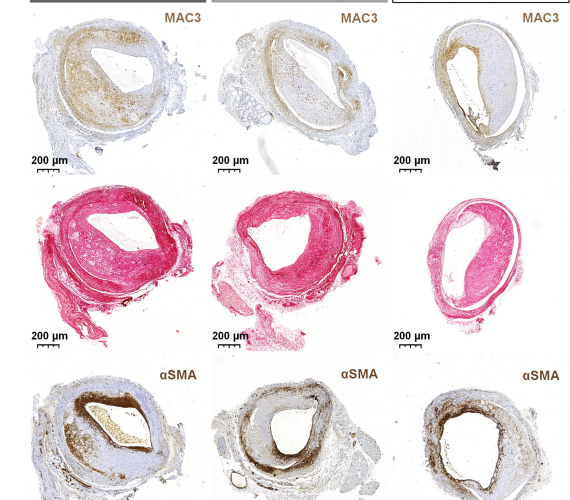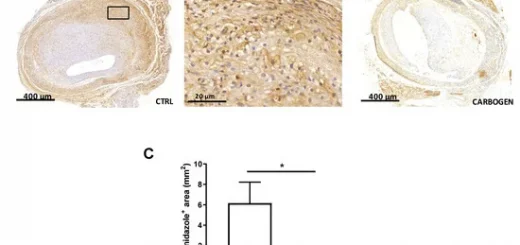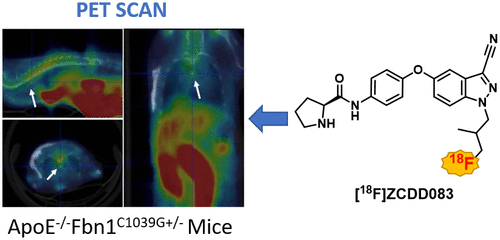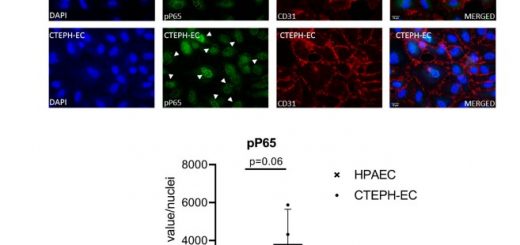Atorvastatin pleiotropically decreases intraplaque angiogenesis and intraplaque haemorrhage by inhibiting ANGPT2 release and VE‑Cadherin internalization

Objective Statins pleiotropically provide additional benefits in reducing atherosclerosis, but their effects on intraplaque angiogenesis (IPA) and hemorrhage (IPH) remain unclear. Therefore, we discriminated statin’s lipid-lowering dependent and independent effects on IPA and IPH.
Approach and results ApoE3Leiden mice are statin-responsive due to ApoE and LDLR presence, but also allow to titrate plasma cholesterol levels by diet. Therefore, ApoE3Leiden mice were fed a high-cholesterol-inducing-diet (HCD) with or without atorvastatin (A) or a moderate-cholesterol-inducing-diet (MCD). Mice underwent vein graft surgery to induce lesions with IPA and IPH. Cholesterol levels were significantly reduced in MCD (56%) and HCD + A (39%) compared to HCD with no significant differences between MCD and HCD + A. Both MCD and HCD + A have a similar reduction in vessel remodeling and inflammation comparing to HCD. IPA was significantly decreased by 30% in HCD + A compared to HCD or
MCD. Atorvastatin treatment reduced the presence of immature vessels by 34% vs. HCD and by 25% vs. MCD, resulting in a significant reduction of IPH. Atorvastatin’s anti-angiogenic capacity was further illustrated by a dose-dependent reduction of ECs proliferation and migration. Cultured mouse aortic-segments lost sprouting capacity upon atorvastatin treatment and became 30% richer in VE-Cadherin expression and pericyte coverage. Moreover, Atorvastatin inhibited ANGPT2 release and decreased VE-Cadherin(Y685)-phosphorylation in ECs. Conclusions Atorvastatin has beneficial effects on vessel remodeling due to its lipid-lowering capacity. Atorvastatin has strong pleiotropic effects on IPA by decreasing the number of neovessels and on IPH by increasing vessel maturation. Atorvastatin improves vessel maturation by inhibiting ANGPT2 release and phospho(Y658)-mediated VE-Cadherin internalization.
Angiogenesis (2021) 24:567–581
https://doi.org/10.1007/s10456-021-09767-9










